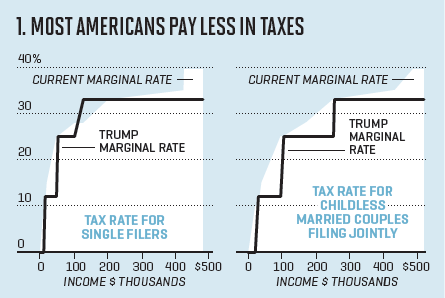Beyond BMW And Porsche: Western Automakers Facing Headwinds In China

Table of Contents
The Rise of Domestic Chinese Automakers
The rapid growth and technological advancements of Chinese brands like BYD, NIO, and Xpeng are directly challenging the dominance of Western automakers. Their competitive pricing, innovative features, and deep understanding of the local market are proving highly effective. This surge in domestic competition is reshaping the landscape for Western automakers in China.
-
Increased market share of Chinese brands: Chinese automakers are steadily increasing their market share, grabbing significant portions previously held by international players. This is fueled by both aggressive marketing and the appeal of their offerings to Chinese consumers.
-
Technological advancements in electric vehicles (EVs) and autonomous driving: Chinese brands are at the forefront of EV and autonomous driving technology, often surpassing Western counterparts in certain areas, particularly in battery technology and integration of smart features. This technological edge is a major factor in their success.
-
Aggressive marketing strategies targeting Chinese consumers: Chinese automakers employ sophisticated marketing techniques tailored to Chinese consumer preferences, leveraging social media and digital platforms effectively. They understand the cultural nuances and consumer expectations far better than many Western brands.
-
Government support and subsidies for domestic brands: The Chinese government provides substantial support and subsidies to its domestic auto industry, giving Chinese brands a competitive advantage in terms of funding for research and development, manufacturing, and marketing. This support significantly impacts the market dynamics.
Shifting Consumer Preferences and Demands
Chinese consumers are increasingly sophisticated and demand advanced technology, personalized experiences, and strong after-sales service. Western automakers need to adapt quickly to meet these evolving expectations to remain competitive in this crucial market. Understanding these evolving demands is critical for Western automakers' long-term success in China.
-
Growing preference for electric vehicles and hybrid models: The Chinese market shows a strong preference for EVs and hybrids, driven by government incentives and growing environmental awareness. Western automakers need to significantly expand their offerings in these segments to stay relevant.
-
Demand for advanced driver-assistance systems (ADAS) and connectivity features: Chinese consumers highly value advanced features such as ADAS and connected car technologies. Western automakers must prioritize integrating these features to meet consumer expectations and compete effectively.
-
Focus on brand image and social responsibility: Chinese consumers are increasingly concerned about brand image and corporate social responsibility. Western automakers need to demonstrate a strong commitment to sustainability and ethical practices to build trust and loyalty.
-
Importance of digital marketing and online sales channels: Digital marketing and e-commerce are vital in China. Western automakers must invest heavily in these channels to reach and engage Chinese consumers effectively.
Navigating Regulatory Hurdles and Geopolitical Tensions
The Chinese automotive market is heavily regulated, and geopolitical factors can significantly impact the operating environment for foreign companies. Understanding and adapting to these complexities is crucial for success in the long term. Navigating these challenges requires careful planning and adaptation.
-
Stringent emission standards and safety regulations: China has strict emission standards and safety regulations that Western automakers must comply with. Meeting these requirements often involves significant investment in R&D and modification of existing vehicle platforms.
-
Import tariffs and trade restrictions: Import tariffs and trade restrictions can significantly increase the cost of importing vehicles into China, impacting the competitiveness of Western automakers.
-
Intellectual property protection concerns: Protecting intellectual property in China is a significant challenge for foreign companies. Western automakers need robust strategies to safeguard their innovations and technologies.
-
Geopolitical uncertainties and potential trade disputes: Geopolitical uncertainties and potential trade disputes can create instability and uncertainty for Western automakers operating in China. Careful risk management is essential.
Strategies for Western Automakers to Succeed
Despite the challenges, opportunities remain for Western automakers in China. Adapting to the local market and focusing on specific niches can lead to success. A strategic approach is vital for continued success in the Chinese automotive market.
-
Investing in local partnerships and joint ventures: Establishing partnerships and joint ventures with Chinese companies can provide access to local expertise, distribution networks, and government support.
-
Developing vehicles tailored to the specific needs of Chinese consumers: Designing and manufacturing vehicles specifically tailored to the preferences and needs of Chinese consumers is crucial for success. This might involve modifications to existing models or the development of entirely new vehicles.
-
Leveraging advanced technologies and digital platforms: Investing in and leveraging cutting-edge technologies, including EV technology, ADAS, and digital platforms, is critical for remaining competitive.
-
Focusing on strong customer service and brand building: Providing excellent customer service and building a strong brand image are essential for long-term success in the Chinese market.
Conclusion
The Chinese automotive market presents both significant challenges and opportunities for Western automakers. While the dominance of BMW and Porsche is being challenged by the rapid rise of domestic brands and evolving consumer preferences, strategic adaptation and a deep understanding of the local market remain key to success. Western automakers must actively address the regulatory hurdles, embrace technological advancements, and prioritize customer needs to maintain a competitive edge in this dynamic landscape. By focusing on these key areas, Western automakers can navigate the headwinds and continue to thrive in the increasingly complex world of Western automakers in China. Understanding the nuances of the Chinese automotive market is essential for any Western automaker looking to succeed.

Featured Posts
-
 Federal Disaster Aid Eligibility Potential Changes Under Trump Officials
Apr 26, 2025
Federal Disaster Aid Eligibility Potential Changes Under Trump Officials
Apr 26, 2025 -
 Luxury Train Service To Connect Hanoi And Hai Phong In May
Apr 26, 2025
Luxury Train Service To Connect Hanoi And Hai Phong In May
Apr 26, 2025 -
 Mission Impossible Dead Reckoning Part Two Super Bowl Ad Hints At The Finale
Apr 26, 2025
Mission Impossible Dead Reckoning Part Two Super Bowl Ad Hints At The Finale
Apr 26, 2025 -
 Justice Department Seeks 7 Year Sentence For George Santos
Apr 26, 2025
Justice Department Seeks 7 Year Sentence For George Santos
Apr 26, 2025 -
 Ajax Vs Az Security Beefed Up Due To Fan Violence Risk
Apr 26, 2025
Ajax Vs Az Security Beefed Up Due To Fan Violence Risk
Apr 26, 2025
Latest Posts
-
 French Auction Sees Camille Claudel Bronze Sculpture Fetch 3 Million
Apr 27, 2025
French Auction Sees Camille Claudel Bronze Sculpture Fetch 3 Million
Apr 27, 2025 -
 Pegula Triumphs Epic Comeback Against Collins At Charleston Open
Apr 27, 2025
Pegula Triumphs Epic Comeback Against Collins At Charleston Open
Apr 27, 2025 -
 Charleston Open Pegulas Dramatic Win Against Collins
Apr 27, 2025
Charleston Open Pegulas Dramatic Win Against Collins
Apr 27, 2025 -
 Pegulas Charleston Open Comeback Stunning Victory Over Collins
Apr 27, 2025
Pegulas Charleston Open Comeback Stunning Victory Over Collins
Apr 27, 2025 -
 Wta Tennis Final Showdowns In Austria And Singapore
Apr 27, 2025
Wta Tennis Final Showdowns In Austria And Singapore
Apr 27, 2025
